An Ecological Odyssey: 2019 Madagascar Diaries #4
Republishing my blog posts from my time as a volunteer research assistant in Kianjavato, Madagascar, in mid-2019
Background: from late July through mid-October 2019, I worked as a volunteer research assistant for the Madagascar Biodiversity Partnership (MBP), based out of the Kianjavato Ahmanson Field Station (KAFS). KAFS is located near the village of Kianjavato, in the eastern rainforests of Madagascar. During this time, I worked to assist MBP’s studies of the critically endangered greater bamboo lemur (Prolemur simus), as well as teaching English classes and later assisting the community reforestation program.
I wrote a series of “from the field” blog posts describing my life and work there as it happened, from a first-person “you are there” perspective. I’m now republishing excerpts from these on Substack!
Here follows a recount of the incredible species community I witnessed at Ranomafana National Park, and the subsequent week of work with the Reforestation team! Thank you all for your interest and support in MBP’s amazing conservation work in Madagascar, and the many other ecological marvels of this fascinating country.
Friday through Sunday: The Wonders of Ranomafana
From the evening of Friday the 6th of September to the morning of Sunday the 8th [2019], the five volunteers in our cohort visited Ranomafana National Park, an astounding jewel of Madagascan biodiversity fortuitously located just two hours’ drive away from Kianjavato.
The story of the birth of Ranomafana begins in 1985, when Dr. Patricia Wright led an expedition to the area in the hopes of rediscovering Prolemur simus, the very species I assisted the study of for my first five weeks at KAFS. (Back then, it was known as Hapalemur simus, and was thought extinct: the Kianjavato populations were not known to science until the late 1980s). She found a new species there instead (more below) and was compelled to a frenzy of activity, working intensely with Western donors, the Malagasy government, and local communities to protect the area’s unique biological treasures. Ranomafana National Park was created in 1991, and since then it’s become one of the primary tourist attractions and regional economic drivers in Madagascar, as well as a world-renowned center of scientific research into the local cloud forest ecosystem. Ranomafana is like the mother ship for conservation in Madagascar’s eastern rainforests. Kianjavato Commune has nine lemur species: the greater bamboo lemur (Prolemur simus), the black and white ruffed lemur (Varecia variegata), the aye-aye (Daubentonia madagascariensis), the red-fronted lemur (Eulemur rufifrons), the red-bellied lemur (Eulemur rubriventer), Jolly’s mouse lemur (Microcebus jollyae), the gray gentle or gray bamboo lemur (Hapalemur griseus), Peyrieras’ woolly lemur (Avahi peyrierasi), and the greater dwarf lemur (Cheirogaleus major). Ranomafana has twelve species: all of Kianjavato’s (except its mouse lemur species is different: M. rufus, not jollyae), plus Milne-Edwards’ sifaka (Propithecus edwardsi), the small-toothed sportive lemur (Lepilemur microdon), and Wright’s new species, Hapalemur aureus.
Ranomafana is also much bigger, with more contiguous, fully “wild” forest and less human presence (thanks in part to Dr. Wright’s negotiations for local communities to withdraw from the area in exchange for aid). In short, the Sangasanga and Vatovavy forest fragments I’ve worked in in the Kianjavato Commune are collectively like Grand Tetons or Custer State Park to Ranomafana’s Yellowstone: a smaller, less famous (but still uniquely awesome) example of the same sort of ecological community. I was incredibly excited to see Ranomafana itself.
Our journey began on Friday. It was a one-off national holiday, in honor of Pope Francis’ visit to Madagascar, and so, conveniently for our Ranomafana plans, a day off for us. Friday was primarily occupied in sleeping in, waiting a few hours for a passing taxi-brousse “bush taxi,” the ride to Ranomafana village, and settling in at the truly excellent Hotel Le Grenat. We also met our guide, Patrick, (who had been recommended to us by Fredo) and prepared for the morrow.
The Day Saunter: a Cloud Forest Odyssey
That next day, Saturday the 7th of September 2019, was one of the most extraordinary and memorable days of my life to date. We had arranged with Patrick a five-hour (or so) day saunter through Ranomafana’s Talatakely Forest (literally Little Tuesday, the very site Dr. Wright worked!), an afternoon break, and then a shorter night walk closer to the road to see the nocturnal wildlife. We entered the forest, led by Patrick, at around 9 AM, after paying the 60,000 ariary entrance fee Ranomafana charged foreigners (Malagasy citizens, as is only fair, got to see their own national heritage for 500). 60,000 ariary is a lot of money in Madagascar, but only about US $15. I was happy to be able to contribute to maintaining this incredible conservation and ecotourism site, and I was particularly happy to see that many others shared my feelings. Groups of intrepid ecotourists abounded (mostly clad in waterproof jackets or ponchos, as it was drizzling in a rather lovely cooling way that day), and I heard recognizable snatches of Mandarin Chinese, French, German, and British English. We also learned that Patrick, our awesome guide, was the son of Richard, one of Dr. Wright’s original guide team-a scion of a family central to the story of Ranomafana!
Immediately upon entering the forest, we were overwhelmed by the background of plant life: not only did Talatakely have the same great tangle of trees and vines and flowers and bamboo and moss and epiphytes that the wildest parts of Sangasanga did, but the landscape was studded with a wholly new plant species: scaly tree ferns, in the genus Cyathea. These were literally ferns the size of a tree. I knew they existed before, in Australia and a few other countries in addition to Madagascar, but being among tree-sized ferns was a viscerally disorienting experience. It made me feel as though I had been transported back to the Carboniferous, and I half expected to see an eagle-sized dragonfly buzzing through the air.
As we walked on (the trail through the rainforest was wide, clear, and in some places semi-paved with stones, another big difference from the narrow byways of Sangasanga), we soon entered the bamboo forest. It was similar to the bamboo groves I was used to, but much denser, thicker, with taller and leafier bamboo that let little light in. There was a dwarfing effect similar to that of the tree ferns: it was amazing to realize that these were house-tall blades of grass around me, covering the trail in their shadows. Part of this was because Ranomafana’s bamboo forest was dominated by Cathariostachys madagascariensis, the Madagascar giant bamboo (pictured), instead of the more mixed-species forests on Sangasanga. However, I’d guess that it’s mostly because this forest was fully protected, and had been for a long time: bamboo is often harvested for use as building material in Kianjavato, and many of the Sangasanga groves were young anyway, only recently recolonizing ex-farmland.
Soon after entering the bamboo forest, Patrick pointed out to us our first lemur sighting of the day: the golden bamboo lemur, Hapalemur aureus (pictured), Wright’s wonders, the new species that spurred the creation of Ranomafana National Park in the first place. Since then, they’ve become an international conservation icon, rivaling the ring-tailed as Madagascar’s most recognizable lemur. A cartoon golden bamboo lemur greets tourists at the park visitor center, and a picture of H. aureus adorns my Malagasy language dictionary, which isn’t even particularly focused on animals or conservation. The species is endangered, with probably less than 2,500 living only in Ranomafana and a neighboring area, but it has a strong corps of researchers and conservationists focused on it. The golden bamboo lemur looks much like the greater bamboo lemur in its physical form and fluffy aspect, but lacks P. simus’ white ear tufts, is noticeably smaller (an average body length of 34 cm to simus’ 40-42 cm) and its fur is not brown, but a lovely honey-like gold. I could see these differences in the little family group of two or three springing about the bamboo canopy above my head (although I couldn’t take very good photos, due to shadows and rain) but I couldn’t see the ecological differences that I knew existed. “Goldies” lived in smaller groups, of 3 to 4 individuals, compared to greater bamboo lemurs’ sprawling clans of up to 28 individuals.
Most interestingly, while Prolemur simus eat fruit, leaves, and berries from a multitude of species in addition to their staple food of bamboo, H. aureus has an extremely specialized diet, almost all young leaves and shoots of one species, Cathariostachys madagascariensis. And-the plot thickens-those are the bits of bamboo that are full of highly poisonous cyanide, in order to deter predators. Prolemur avoids these deadly dainties, but golden bamboo lemurs eat them to the point where their blood contains cyanide levels that would kill almost any other mammal. Dr. Wright’s theory is that it’s an example of habitat partitioning: in Ranomafana alone, H. aureus lives sympatrically (in the same territory as) three other bamboo-eating lemurs, Prolemur simus and Hapalemur griseus, both of which also eat bamboo but neither of which share the golden bamboo lemurs’ cyanide tolerance. Some time ago, in the mist-shrouded past of Madagascar, one proto-bamboo lemur was presumably lucky enough to be born with a slightly higher tolerance for cyanide, thus obtaining a considerable source of extra food that it had all to itself, and was able to pass on those natural-selection-favored genes. Fast forward a few thousand generations, and you’ve got an entire species casually snacking on cyanide salad. The great epic tales wrought by evolution can be weirder than any novel.
In that same bamboo forest region of Talatakely (pictured: the breathtaking terrain on the approach to Talatakely), just after leaving H. aureus, we met Ranomafana’s resident Prolemur simus. Both of them. Shockingly, only two greater bamboo lemurs are left in Ranomafana National Park: years of hunting meant the population was extremely low by the time the park was established, and a spell of bad luck in the lemurs’ dealings with the natural world, such as predation by goshawks and fossas, did much of the rest. Worse, the remaining two are a father and daughter, so they don’t even constitute a breeding population. Patrick told us that last breeding season, the daughter attempted to “flirt” with her father, but was rejected (many primates, including chimpanzees, us, and apparently P. simus, have evolutionary/social taboos against incest). Dr. Wright, still intimately involved with lemur research, is reportedly planning a reintroduction of more P. simus into Ranomafana. On our hike, we didn’t get a very good view of the lonely pair, seeing little besides their movement and vague shapes in the bamboo canopy occasionally raising their head. Soon, Patrick’s phone beeped: Joseph, the animal spotter that went ahead of us had seen a third lemur species. (This tag-teaming between a guide and an animal spotter was a smart business move and highly efficient: I recommend it for all aspiring ecotourist guides).
The third species we saw, on the way out of the bamboo forest and into the “regular trees” (and tree ferns) canopy, was another familiar one: Eulemur rubriventer, the red-bellied lemur. We saw a pair playing along a branch, alternately sitting next to one another and dangling upside down from it by their flexible feet (pictured). These beautiful russet lemurs are generalists, eating fruit, nectar, leaves, and flowers of over 70 forest species. The males (distinguished by the white “teardrop” markings on their faces) are also unusually clued-in dads: the female carries the young for the first five weeks, but then gives them to the male, who carries them until about the 100-day mark, when they are able to move on their own. Unlike the critically endangered Prolemur simus and Varecia variegata that KAFS studies in Kianjavato, with only a few hundred individuals left for each species, Eulemur rubriventer is doing (relatively) okay: it’s found in eleven protected areas and there were about 165 individuals in captivity as of 2009.
Next, we joined a crowd of other guided groups, all staring at Varecia variegata, the breathtakingly beautiful black-and-white ruffed lemurs that adorn the logo of MBP and are one of the primary research foci back in Kianjavato. I’d seen the distinctive colors of Varecia moving through the canopy in the distance a few times, both while following Prolemur and on my saunter up Sangasanga with Theoluc, but only in Ranomafana was I able to really give these enchanting animals the attention they deserved. Their signature black-and-white pelage makes them instantly recognizable: I’d had to struggle to distinguish the shapes of the bamboo lemurs earlier, but the Varecia were such a contrast with the shadowy green canopy that I saw them immediately, and could get an up-close-and-personal view through my binoculars (pictured, above). As we watched, one came up to another on a branch (they aren’t sexually dimorphic, so I couldn’t tell if they were male or female), they faced off for a while, then retreated back to their own resting spots. It reminded me of my cats back home eyeballing each other into submission over who got the best spot on the couch. Unlike bamboo lemurs, all species of ruffed lemurs (V. variegata and its subspecies plus V. rubra) are highly frugivorous, eating the most fruit as a proportion of their diet of any lemurs. They’re also unusual in that they have litters of two or three babies at a time, instead of other species’ usual one infant, and that they give birth and care for these infants in specially built nests. This makes the ruffed lemurs the only primates to make nests for childcare purposes (gorillas and aye-ayes also make nests, but use them as short-term crash pads for adults rather than long-term nurseries). As we left the Varecia site, Patrick told us that some had already begun building nests, well hidden in the canopy, in preparation for the birthing season in October. May these gorgeous creatures be fruitful and multiply, and may the hills of Madagascar long echo with their calls!
We had a longer way to go to see our fifth lemur species, the Milne-Edwards sifaka. Propithecus edwardsi. One of nine or so (it’s disputed) species of sifakas in Madagascar, all named after their characteristic “shee-faak” and sharing a long-limbed body structure, Milne-Edwards’ sifakas are mostly black with white patches on their back and sides. Ranomafana National Park is their stronghold, with an estimated 4,500 individuals in the park, probably half or more of all the Milne-Edwards’ sifakas in the world. (Sadly, these sifakas used to be present in the Kianjavato Commune, but recent surveys found no trace and concluded that the last few had moved away or died). The sifakas we saw were in a group consisting of two females (and a baby, though I personally couldn’t quite pick out the form of the baby) huddled together against the rain on a branch (pictured), and one male in a different tree a few meters distant. Like all lemurs except Prolemur simus and one species of dwarf lemur, sifakas are matriarchal, and this male had probably been “ordered” to keep watch for hawks and other predators. Patrick told us that the sifakas had distinct alarm calls, different “words,” for predators approaching from the sky, like hawks (for which the smart thing to do would be to climb down) and predators approaching from the ground, like fossas (for which the smart thing to do would be to climb up). Wow!
And these were just the highlights, the lemurs that were the park’s star attractions. Along the way, we hiked up many little slopes, crossed a large river with a bridge and a small river with stepping-stones, were amazed by the continual majesty and diversity of bamboos, trees, and flowers…and Patrick and Joseph pointed out to us many more of the legendary fauna of Ranomafana. The giraffe weevil (Trachelophorus giraffa) looks like an insect from Mars: a bright red carapace and a long, giraffe-like neck, which the males use like lances or quarterstaffs to joust with other males over females. The giraffe weevils Joseph saw were a couple: a longer-necked male and a relatively short-necked female. I got to hold them in my hand (pictured), and it was an absolutely mesmerizing experience watching them stumble over the lightly ridged terrain of my palm and fingers, like aliens on an exoplanet’s plains.
We also got to see Uroplatus phantasticus, the “Satanic” leaf-tailed gecko, on two different occasions: an older male and a juvenile. I’d seen this species during my night saunter on Sangasanga with the aye-aye team, but even so I couldn’t pick out the “king of camouflage” against its leafy background until Patrick pointed straight at it. This gecko mimics dead leaves with uncanny veracity, and I was completely taken in. Once I saw them, I was enthralled by these epic little leaf dragons, perhaps the best example of crypsis (protective coloration, evolution to resemble a common background item) in the world. They look otherworldly, like a Photoshop merge between a lizard and a dead leaf, or a gecko wearing a dead-leaf suit. It’s hard to believe that the so realistically-leaflike protuberances and veins on their skin are real, the product of millennia of natural selection in which the most convincingly leafy geckos evaded predators’ eyes.
After this wonderful, wonderful morning, positively glutted with wonders and joy, we stopped at a little spot with an overhang and benches, and ate the take-away lunches we had ordered that morning from the Hotel Le Grenat. I had a huge cheese and tomato sandwich on a delicious white-bread baguette, and it seemed to me like the finest ambrosia, a culinary marvel: I was hungrier than I had thought. But Ranomafana was not finished with us yet-far from it. As we savored our sandwiches, a long, deep red, vaguely weasel-like creature crept in to the little “courtyard” of the trail-stop, displaying as little fear of the exclaiming tourists gathered around it as a pigeon in a city park (pictured, above). I recognized it immediately: it was a ring-tailed vontsira, Galidia elegans, evidently an individual very habituated to human presence, and it was the first euplerid (endemic Malagasy carnivores as taxonomically different from other mammalian carnivores as cats are from dogs and weasels and bears) that I had ever seen. Based on its bright red fur and characteristic ringed tail, it was a male. This was so awesome! Even on lunch break, Ranomafana was practically shoving its wild creatures in front of our faces. The vontsira stayed around for so long that we finished our sandwiches, and I took umpteen pictures and a five-minute video of him snuffling around the ground looking (I presume) for insects or crumbs. When it finally took its leave, we mourned the departure of such a unique and beautiful creature-but not for long! Barely a minute later, a second vontsira crept into the courtyard, also foraging. This one was a female, with a uniform dark-brown tail and less deeply red fur. We also got a fleeting glimpse of a smaller vontsira, doubtless her baby, in the undergrowth! Given their temporal and spatial proximity, these vontsira are almost certainly a family. It was an amazing privilege to glimpse the daily life of these beautiful creatures, and a wonderful send-off to our day hike at Ranomafana.
The Night Walk: Mouse Lemurs and Chameleons Galore!
After a few hours relaxing at our awesome hotel, we met up with Patrick again as darkness was falling, in order to get a look at some of the animals inhabiting Ranomafana at night. For safety and accessibility reasons, we didn’t go on forest trails for this one, but stayed within a few meters of the main road. Our main quarry were mouse lemurs, Microcebus rufus, the local examples of the lemur family that had evolved to fill an ecological niche typically taken over in other lands by rodents. M. rufus is known to be omnivorous, sleep in tree holes, and to be predated upon by our beautiful visitors from earlier in the day, the ring-tailed vontsira. We saw them closely on two separate occasions, scurrying along branches (pictured, the one from the second occasion). From behind or from the side they look just like reddish chipmunks, but the sight of the head and the unquestionably primate-like eyes dispels that illusion. To me, there is something a little eerie and uncanny about a primate that you could hold in your hand, a cousin of humans that sleeps in holes in trees and lives in fear of hawks, vontsiras, and stray cats. Mouse lemurs are quite simply the closest thing real-world has got to the tiny primates of fiction, the Lilliputians or Borrowers or gnomes or Nac Mac Feegle of fantasy tales. With the panda-esque bamboo-eating Prolemur simus, they rank as a classic example of how lemurs in Madagascar have diversified to fill a multiplicity of niches, even those not usually occupied by primates.
In an interesting interlude, Patrick also pointed out for us a sleeping sunbird, a little multicolored ball behind a leaf with its characteristic long beak tucked under a wing. It’s rare to see a sleeping bird, and it was pure luck that we stumbled on this little beauty. (As a side note, I’d just like to give Patrick an unsolicited testimonial here: he was a spectacular guide, kind, skilled, and immensely knowledgeable, and I recommend all future visitors to Ranomafana to ask for the services of Patrick, son of Richard).
The wildlife-watching mainstay of the evening, however, was chameleons. During the course of that night walk, we saw multiple individuals of four distinct species of chameleon, all in the genus Calumma: O’Shaughnessy’s chameleons (C. oshaughnessyi, pictured), cryptic chameleons (C. crypticum, pictured), Glaw’s chameleons (C. glawi), and nose-horned chameleons (C. nasutum). My favorite were the two biggest, the O’Shaughnessy’s and cryptic chameleons. All of them were just hanging out on branches and bushes by the side of the road, and allowed us to get within inches of them to take photographs. Madagascar has over two-thirds of the world’s chameleon species, and many experts think the whole lineage of these color-changing, eye-swiveling, projectile-tongue-hunting lizards evolved on the island, like lemurs, and dispersed from there (perhaps on rafts of vegetation swept away by storms) into the outside world. If so, chameleons are one of Madagascar’s most successful biological exports, joining lemurs, tenrecs, euplerids, vangas, cuckoo-rollers, and more as a family rooted in the red soil of the island-continent.
When we left Ranomafana the next day, I was replete with joy, reveling in the fulfillment of my childhood dream of exploring a wild rainforest full of animals. The weekend excursion also gave me a new perspective on the work I was doing in Madagascar. Ranomafana village was visibly richer than Kianjavato village: more and bigger schools, an abundance of hotels, shops with plate-glass windows instead of street stalls, houses made of painted planks, metal, and bricks instead of just-chopped bamboo. Madagascar is an extremely poor country with a cornucopia of unique and visually stunning species: even independent of their inherent value or any other environmental considerations, monetizing this through ecotourism is just a smart move. Nations like Costa Rica and Rwanda have moved ecotourism to the center of their economic strategy, established world-class protected areas and strong community conservation efforts, and reaped millions in tourist money and higher national living standards as a result. Madagascar, from the village level to the national government level, needs to follow this path, for the sake of all of its human and animal residents.
Ranomafana also reminded me why MBP’s reforestation work is so important. Ranomafana now is what all of eastern, rainforest-biome Madagascar used to be: rolling hills and majestic mountains uniformly cloaked in forest, populated by an incredibly diverse and unique fauna and flora and overseen by a rich, populous interspecies community of lemurs. Compared to Ranomafana, I saw too clearly that my beloved Sangasanga, the first real rainforest that I’d ever gotten to know, was in truth a forest fragment, surrounded by rice paddies, grazing zebu cattle, a town, and eroding, denuded hills, protected from being razed for tavy not by the iron laws and ranger staff of a national park but by the grace of the local community and the guidance of MBP. The work of the reforestation team, though perhaps not as heart-thrillingly exciting as collecting data on wild lemurs, is the best way to guarantee the future of these critically endangered species, through growing new tree corridors that will enable gene flow between their forest fragment strongholds. What MBP is doing here is incredibly important and honorable, and I am incredibly thankful to the hundreds of people, from American primatologists to Malagasy nursery managers, who work every day to make it possible.
The Week’s Work for Reforestation
Monday dawned wet and drizzly, but I enjoyed walking through the forest for Seed Collection nonetheless. With three Malagasy staff members, Leva, Tadidy, and Luva, I picked bonary mena seeds (looking exactly like red M&Ms) out of little unheeded pockets of soil and leaves where they had fallen from the parent seed pod (pictured). After a few hours of work, we had a huge bagful, all destined to be raised into seedling-hood by the nurseries. The bonary mena, Adenanthus pavonina, is, along with acacias, one of the tree species most commonly used as “pioneers” by MBP. Common across the tropics and known by many names, from red sandalwood to coral tree to “mutual love bean” (the Chinese name for the seeds), it is a hardy, fast-growing pioneer species good at growing in degraded land, and a leguminous nitrogen-fixer that leaves the nutrient content of the soil better than it found it. It’s now one of my favorite trees: a beautiful and useful species that’s happy just to suck carbon dioxide from the air and shelter bacterial buddies that add nitrogen to the soil. Seed collection and planting are my two favorite jobs on the reforestation team, as they allow me to work directly with the trees. (Although, of course, the administrative work, like managing funds, equipment, and GPS coordinates of planting sites, is equally vital, and I am honored to be able to work for MBP in any capacity).
In English class that afternoon, we went over parts of the body, from “rantsara” (fingers) to “vava” (mouth) to “tongotra” (leg). I drew a diagram that owed more to expediency than ability, and in joking self-defense proclaimed, aping Star Trek’s Dr. McCoy, “Mpampianatra aho, tsy artista aho” (I’m a teacher, not an artist).
Tuesday: The Burden of the Basket
On Tuesday morning, Dakota, Romuald, and I went out to Moving Seedlings, the customary Tuesday task of overseeing the movement of baskets full of seedings from nurseries to nearby planting sites. At the first nursery, we simply helped load the baskets and watched local men do the heavy lifting. At the second nursery (Vatovavy Nursery, nestled in the foothills with a beautiful view of the mountain itself), after loading many baskets and sharing the nursery staff’s morning meal of boiled cassava (delicious, by the way, like a naturally creamy potato), I had an idea. An ill-advised one, as it turned out. I wanted to demonstrate that I was willing to share in, not just watch, the labors of my colleagues, that I considered their work valuable and meaningful, that a vazaha (a foreigner) was not somehow “above” joining them in moving seedlings. I asked to carry one of the baskets to the planting site myself. Romuald asked several times if I was sure, and then helped me load the basket in the customary carrying position: on my head, cushioned by a folded (and dirty) sack.
A woven basket filled with twenty-five seedlings, each wrapped with a goodly cylinder of soil, weighs quite a lot, I’d estimate about sixty to seventy pounds. I wobbled a bit as I stood up, but steadied the basket with my hands and went off down the trail from the nursery to the road. I knew the planting site was on the other site of the road, and I suppose I unconsciously assumed that the road marked, more or less, the halfway point of the journey. I got down the trail from the nursery with exertion but no real difficulty, and was feeling pretty proud of myself. Then I began climbing the hill on the other side. At every point where the vegetation grew grassy, indicating relatively recent deforestation for tavy (and thus a prime candidate for planting), I turned to look for the planting site. I didn’t find it. I made a left turn, and climbed another hill, my shoulders and neck beginning to ache and my legs protesting with every step. Then another, walking along the ridge of one for a bit. Fifteen or so minutes went by, my neck aching more and more, my muscles straining. Then I began climbing another, I’d guess a mile out from the nursery. By this point, it was unquestionably the most difficult physical exertion I’d ever done in my life. It was like picking up my shoulder press bar from a weight workout back home and then going on a long, semi-mountainous hike with it perched awkwardly on my head. I forced myself on, knowing that it would be hard to load the basket back onto my head by myself (or summon the will to do so). Then, I crested the hill, and saw what lay ahead of me: the steep slope of a positive mountain. Just a high-ish foothill here, but definitely high enough to be called a mountain in New England. The figures of seedling basket-carrying workers moved up its side like ants in the distance. The planting site was at the top.
At this point-I’m not ashamed to admit it-I collapsed. There was no way I could move that basket up that mountainside by myself. I squatted down and pulled it off my head, cradling it like a giant seedling-filled baby, and considered my next move. Eventually, another Malagasy gentleman carrying a basket full of seedlings passed by, and I suggested with word and gesture that we combine our forces. We threaded a stout piece of bamboo through the handles of both baskets, and each took one end of the bamboo on our shoulders: both baskets carried, but the weight spread out more. By this means, we made it down the hill, through a little marshy patch, and perhaps a quarter of the way up that final forbidding slope. I had to stop for a break seemingly every hundred steps, apologizing to my tireless comrade and saying, both as explanation and from sheer respect, “Mahery lehibe ianao, mahery kely aho!” (You are very strong, I am a little strong). Despite my best efforts to overmaster my aching neck, straining muscles, and exhausted frame, the breaks grew longer, and the pace slower. Eventually, another Malagasy laborer, seeing me struggling during a break period, stopped to help. He picked up the two-basket bamboo pole that the two of us had been carrying, balanced it all on one shoulder, and positively jogged up that slope. He was back with empty baskets, having made it to the top, deposited his load, and returned, before I, without baskets, gotten any further than down the mountain and halfway up the next hill. Unbelievable.
As a little postscript to that, when I finally got back, unburdened to the truck by the roadside, I noticed that two or three of the local workers-who had just carried four baskets each, way more than I did-were hauling three good-sized logs into the bed of the truck. Logs. And laughing merrily the while. I tried to help, but my bones were wet noodles: I was little more than a vazaha-shaped hood ornament.
The level of manual labor that the average Kianjavato Commune citizen does every day is staggering. Mind-bending. Backbreaking. These aren’t Chris Hemsworth-esque musclebound figures, either: I regularly see people half my size carry four of these baskets in an hour with no apparent effort, do push-ups or pull-ups while they’re waiting for the car by the side of the road, and then go back to working in their rice paddy or vegetable garden. The twelve-year-olds here can carry more baskets than I for longer. I can only surmise, based on half-remembered studies of musculoskeletal plasticity I’ve read, that being raised in it must lead to a different body structure: denser bones, different tendon strength and connectivity, a body adapted through bitter experience to enduring this sort of labor for a lifetime.
Once I got back to KAFS, I wolfed down my lunch of nasi goreng (rice, vegetables, and a fried egg) and then immediately went down to Joseph’s, the local bakery, and went critical, buying and consuming three pieces of banana cake, a pain au chocolat, and a piece of flan in the space of fifteen minutes with willful disregard for my weekly budget. Only then did I proceed to data entry and other tasks for the day. These included my first English class for the aye-aye team: sparsely attended, but fun and productive. We covered pronouns, the verb “to see,” and a few simple nouns and adjectives, constructing sentences like “Do you see the aye-aye?” and “I see two lemurs.”
That evening, I Skyped my family, and told them of all that had occurred. We collectively thanked the gods for the labors of our grandparents and great-grandparents, who’d worked as farmers, coal miners, and many other grueling jobs in order to give their kids a better life than they had had. Being born into an American middle-class family, without having to farm or mine or do factory work for a living, is an unbelievable privilege, and for many an unimaginable blessing. I hope to retain the humility which I gathered this day, and remember to continue to use the unearned privileges I have been born with to work to improve the lot of others.
Wednesday: Planting and English Class
On Wednesday morning, I served as the volunteer for a planting event in the Vatovavy area-the event that utilized the seedlings which had been so laboriously brought across the hills the previous day. (Pictured: Vatovavy as seen from the planting site that day). Without a sixty-odd pound basket on my head, I felt as light as air hiking up to the site. Once there, I gave one staff member the GPS, another the tree species-logging sheets, and wrote down the names of all the 36 local citizens (mostly women) hired for the day, so that their contributions could be recorded in MBP’s Conservation Rewards program (in addition to their being paid in cash at the end of the planting event). After my humbling experience the previous day, I knew that I was most valuable as an administrator, keeping track of the funds and the GPS coordinates. Any physical help offered by volunteers could be no more than a token of our good intentions.
In the KAFS English class I taught that afternoon (pictured, the whiteboard), we crossed a Rubicon that I was very proud of: everyone produced a recognizable “th” sound, and we learned such vital words as “this” “that” “these” and “those!” “Th,” pronounced softly, like in “the” or “this,” seems like a common phoneme, because it’s used in English and Spanish, two of the most widely spoken languages in the world. But among languages, it’s vanishingly rare: Malagasy, like nearly all other human languages, doesn’t use that sound. (For another example, French words often include “th,” but it’s always pronounced like a hard “t”: “theatre” is pronounced “tey-atre,” not “thee-ater” like in English). It’s hard to learn totally new sounds: it reminded me of when I tried to learn the Mandarin Chinese vowel tones, with middling success. The immediate temptation of my students was to use a similar-sounding phoneme, like “f,” or “v,” but all eventually won through, to my great felicity. As usual, the class concluded in a carnival atmosphere, everyone clapping at right answers and exclaiming pride in their newly increased knowledge of English. I really love teaching English.
Thursday and Friday Morning: Nursery Checks and Planting
Thursday morning was the nursery check, in which the Reforestation team (Dakota, Dana, myself Romuald, and some other Malagasy staff members) were driven around the 16 near nurseries to monitor their progress. We counted seedlings, distributed salaries, catalogued compost, and delivered equipment: watering cans, little locally-made spades with the bark still on the handles, a pen. I also wrote quite a lot of this blog on Thursday, and read a good deal. On Friday morning, I was the volunteer for a planting event in the hills around “ABF” (Ambodifandramanana) nursery, which was perhaps the most enjoyable and insight-giving planting event I have yet been part of. The terrain offered a spectacular living time-lapse view of MBP’s reforestation efforts. In front of us, we were planting tiny, six- to ten-inch tall seedlings that had left the nursery a few days ago. Right next to our planting site were bigger saplings, mostly bonary mena, that reached up to my knee already: from a planting event earlier in the year. On the other side of our planting site were a grove of young trees, mostly acacias, with beautiful bright green chlorophyll-saturated leaves (pictured, above). They were all taller than me, and Romuald said they had only been planted last year. (Oh, to be a growing tree in a land without winters!). In the distance, on another hill, we could see the same acacia-green leaves adorning a chunk of the forest that was as tall as any other part, proper twenty foot-odd grown trees (pictured, bottom). They had been planted by MBP as well, only five years ago.
Already, those trees had all used photosynthesis to build complex sugars from carbon dioxide in the air, many of them had contributed nitrogen to the soil, each one was holding together the living earth with their roots and cooling the area around them on hot days through evapotranspiration. When linked up with other plantings in the future, and supplemented with plantings of forest species to join their pioneer communities, they would provide new safe havens for critically endangered species. And on a global scale, they were an example of tropical forest protection and restoration, which Drawdown ranks as the climate change solution with the fifth-highest potential total atmospheric CO2-equivalent reduction by 2050. The immense research team behind Drawdown calculated that if existing tropical forest restoration targets are met (a tall order, but definitely achievable), restored tropical forests like MBP’s could draw down 61.2 gigatons of carbon dioxide by 2050, or 61,200,000,000 tons. That’s complex, but what it means is that tropical forests like Madagascar’s are so good at drawing carbon dioxide down from the atmosphere that protecting and expanding them is considered the fifth-most effective solution to climate change-in a list of 80 evaluated solutions that also includes solar power, wind power, electric cars, agroforestry, permaculture, smart thermostats, switching to plant-based diets, switching to LED lighting, clean cookstoves, bike infrastructure, and pretty much every other awesome environmental initiative you’ve ever heard of. I love working here.




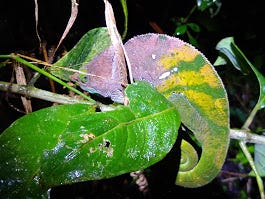
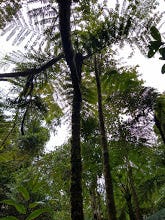
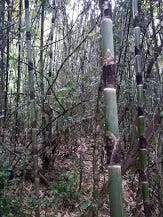
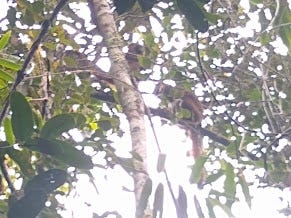

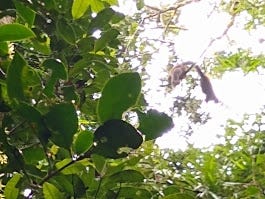
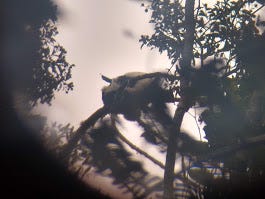
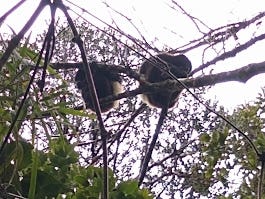
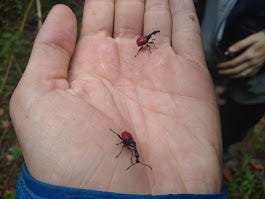
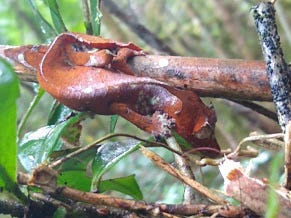
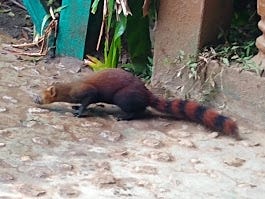


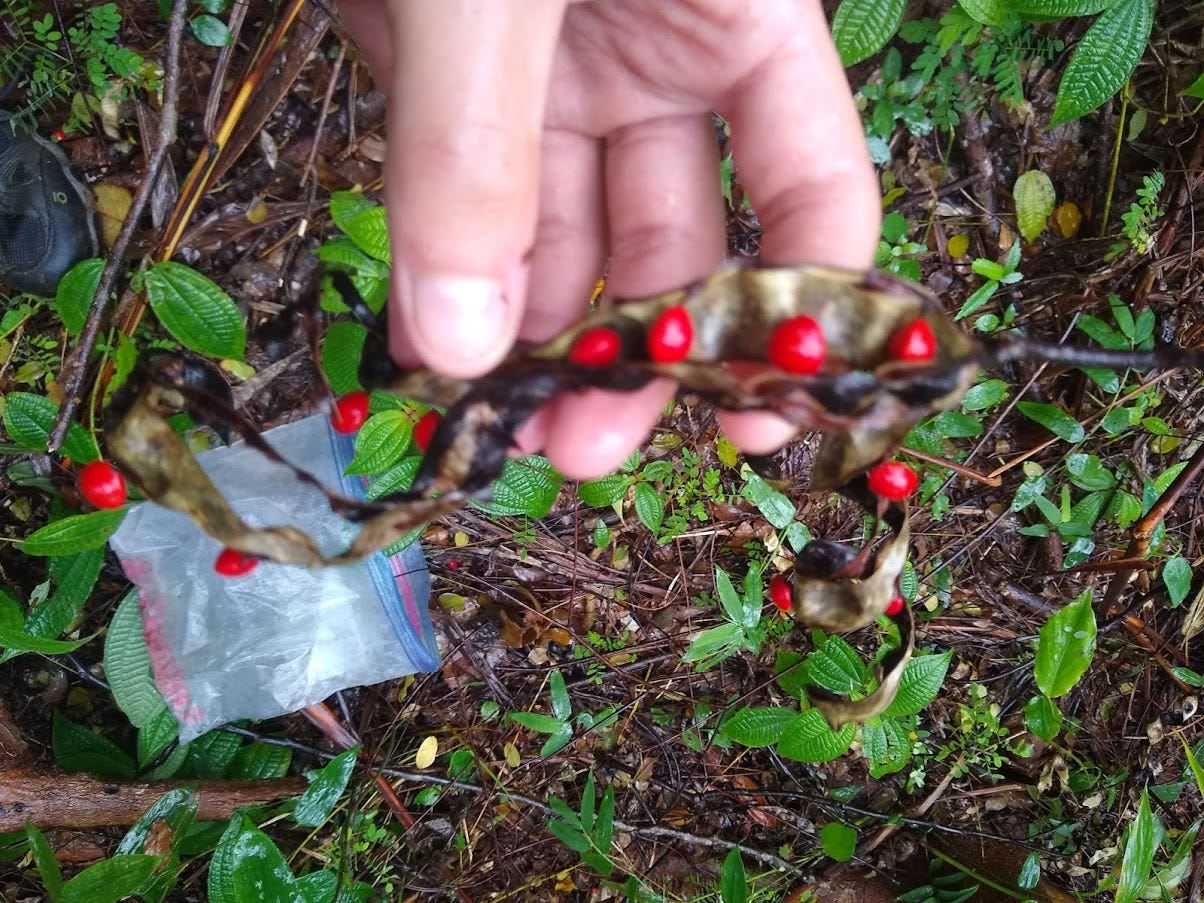
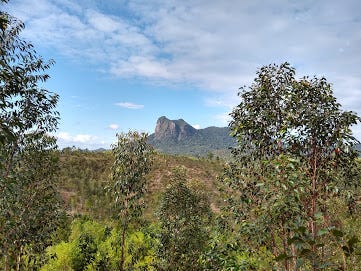

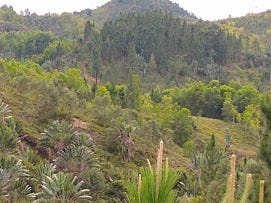
Like I said, get an agent! These excerpts, collected under one cover, eminently publishable! Thank you so much for introducing us to a truly magical world.
If we can use our rapidly evolving bio-engineering capabilities, and using H. Aureus as inspiration, give we humans the capability of finding rich nourishment in microplastics etc... We can get tasty meals and clean up the world simultaneously! 🙂